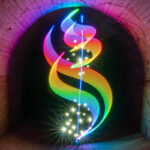
Light Review: Concentrate by Threeworlds C5 LED Light Unit

The Concentrate by Threeworlds C5 is a compact RGB light unit designed to illuminate Concentrate’s range of light tubes including the Kali and Play series sticks. Whilst the C5 LED Light Unit is included with these products, it is also available as a standalone product. Some Australian light painters have recently displayed some great photos on Facebook using the C5. With light painters always being on the hunt for more colour changing light options, I thought it would be a timely opportunity to review one.
Disclaimer
The Concentrate C5 was purchased by myself from Threeworlds, who are based on the Gold Coast, Australia (they ship globally). 5% off link.
Construction
The Concentrate C5 LED Light Unit is a compact plastic cylindrical unit, that houses a single rechargeable NiMH AAA battery (batteries not included – I recommend using Ikea Ladda 900mAh NiMH AAA batteries and a decent smart NiMH or multi-chemistry charger). There is a single reverse clicky switch at one end, and 3 RGB LED emitters at the other end.
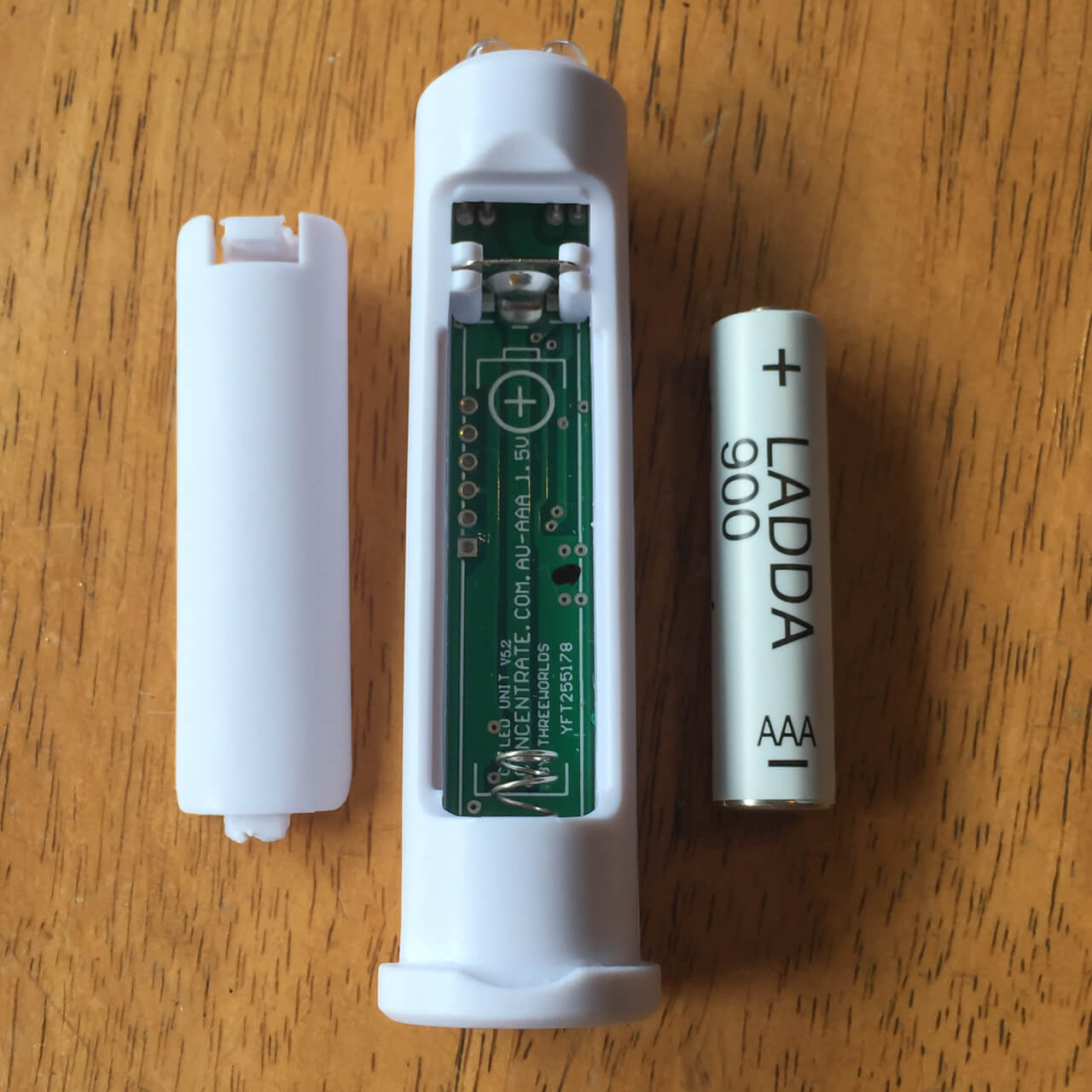
Concentrate C5 with battery door open, and AAA battery.
As the C5 is designed to live within the end of a dedicated tube, it isn’t built as sturdy as a flashlight. There is also no lens over the LED emitters to protect them. So care needs to be taken when using this device. It is relatively narrow at 17mm diameter, and is thus narrower than commercial light painting connectors. A little bit of DIY is required to connect it to light painting tools – personally I’m using some fuzzy tape around the C5 so that it snugly fits inside the Light Painting Brushes Universal Connector. A silicone end cap can also be ordered from Threeworlds which also makes it easier to fit inside some light painting connectors – I wish I had known this when I purchased it!
User Interface
The Concentrate C5 has a single switch which is used for both mode selection and programming. The C5 unfortunately does not maintain static colours (unless you leave it in programming mode, or program a fade with the same colours – thanks to Tom Hill for that advice), but handles complex multi-coloured patterns very well. For programming, there are 10 colour options (red, orange, yellow, green, light blue, royal blue, purple, pink, white, and black), and 7 mode options (fade, slow alternating, fast alternating, slow strobe, fast strobe, strobe dash, and cycling all modes). It is possible to program between 2 and 4 colours per mode. There are 9 presets included (accessible via single click from off), and you can also save 6 presets (click and hold from off). A press and hold (1.5secs) from on turns off the C5. Unless the mode you want to use is the first preset, there is no last mode memory, nor momentary functionality. There is also no brightness adjustment, nor full spectrum colour fade modes.
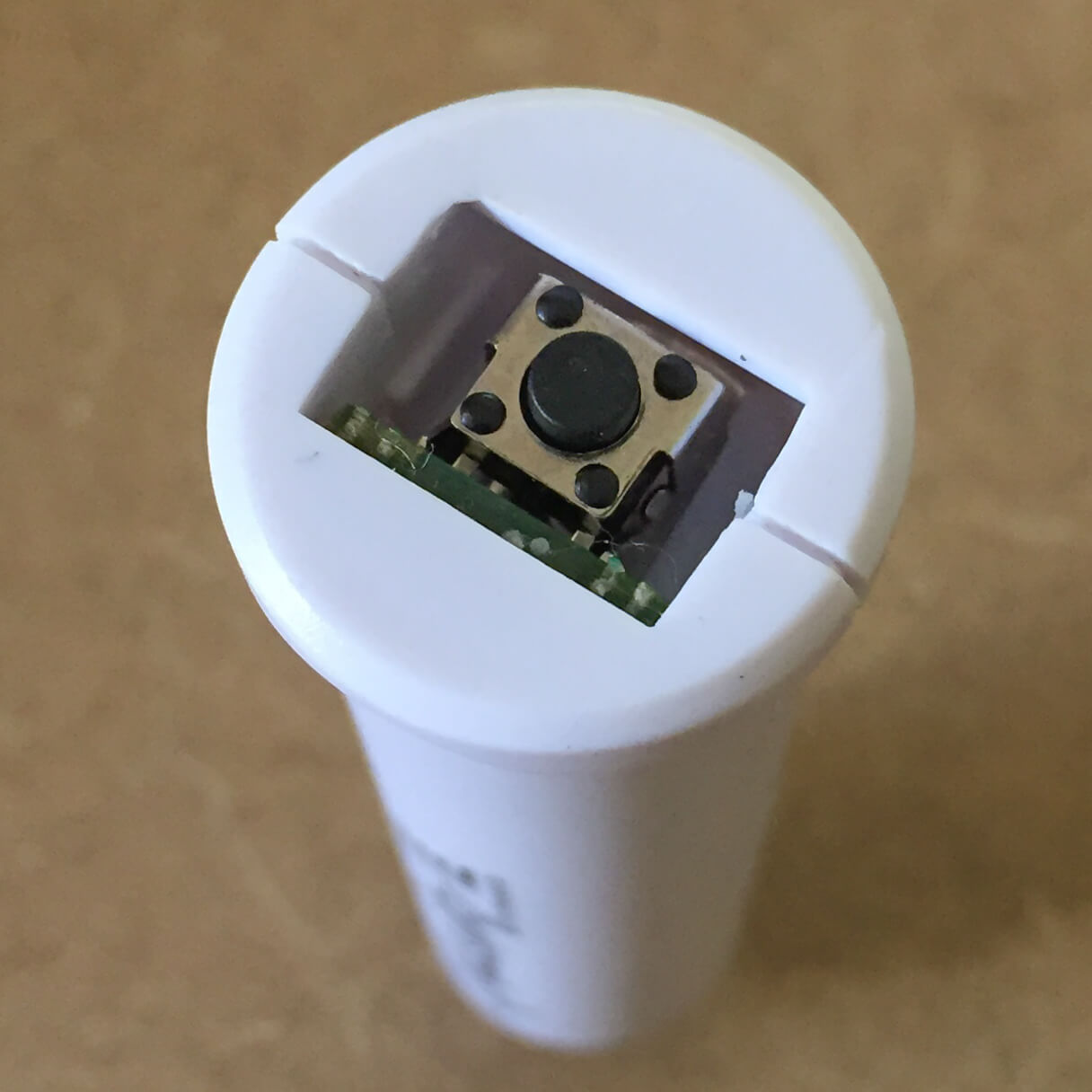
The switch is used for all functions.
Creating presets is quite easy. A double, triple, or quadruple click is required to enter 2, 3, or 4 colour modes respectively. A click moves between colour, a hold (1.5secs) selects the colour. After each hold, the light flashes twice to acknowledge the selection. After the colours have been selected, the programming mode moves to effect mode choice. A single click moves between effect mode. A hold (1.5secs) saves the program to the saved mode bank. If you decide you don’t want to save a program, just keep holding until the C5 turns off. The light comes with a good set of instructions, and it doesn’t take too long to work out the programming user interface.
Output and Beam
There are 3x 5mm LEDs – Red, Green, and Blue (RGB) which are surprisingly bright for the size of the device and running off a single AAA battery. The LEDs all protrude from the top of the device, and there is no lens or diffuser.
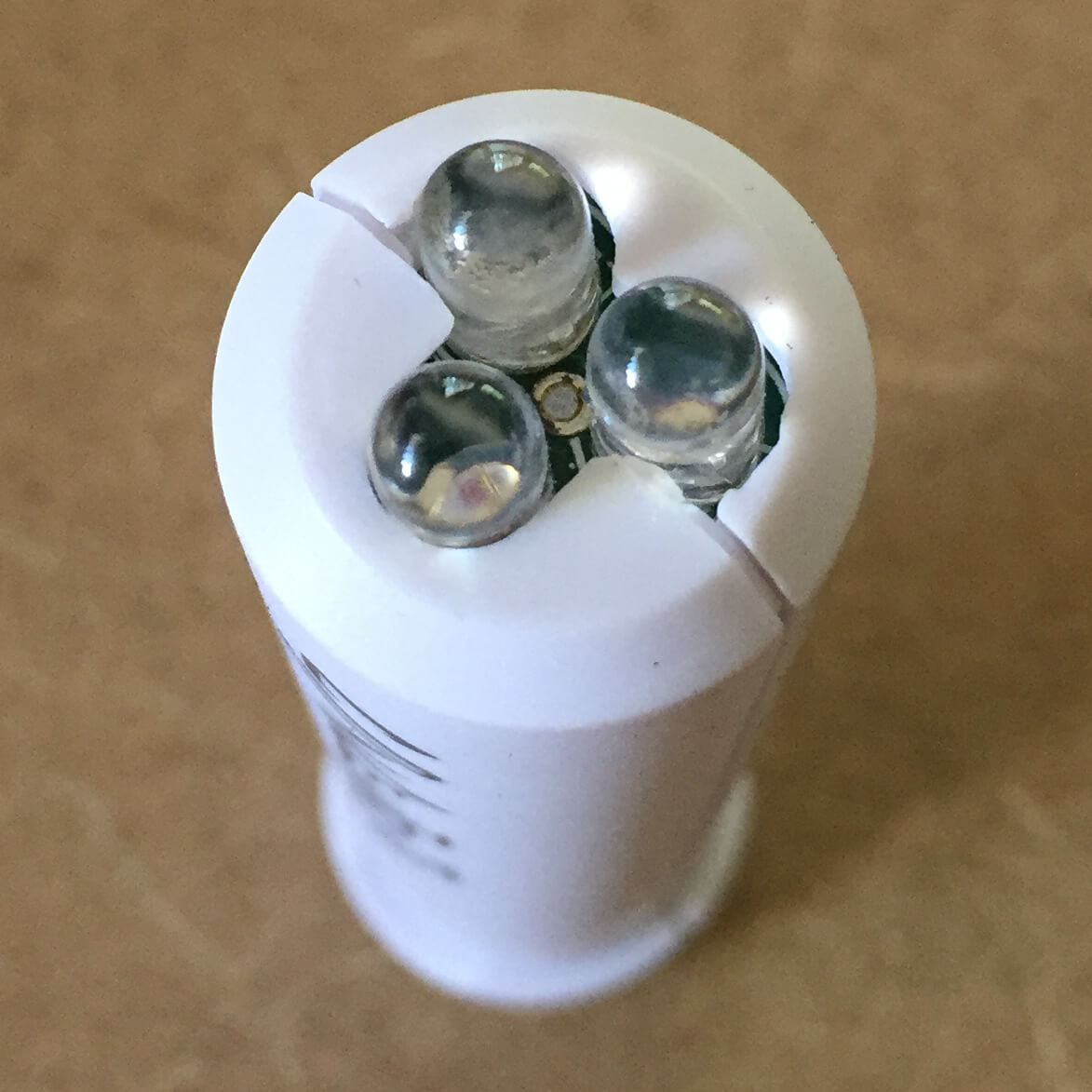
The Concentrate C5 has 3 LEDs – Red, Green, and Blue.
The beam pattern is surprisingly throwy. The output (white/RGB all on) was measured at 36 lumens. This is slightly brighter than the Color Shine Flashlight (white/RGB all on) and Ledlenser P7QC on low mode. However, due to the beam pattern being much more throwy (i.e. projecting the light forwards in a narrow beam) the peak beam intensity (candela/lux) is noticeably higher than the Color Shine flashlight. The C5 is approx. 0.5 stop of a photographic exposure better at illuminating light painting tools such as light blades, swords, and tubes than the Color Shine Flashlight. The narrower beam means that it may be not so good at evenly illuminating tools such as fibre optics. Due to the low output, the C5 is best used in studio and dark ambient conditions, and wide aperture and/or high ISO are required for an accurate exposure.
Due to the 3 separate LEDs and no diffuser, colour mixing straight out of the light is poor, so this light isn’t great for illuminating objects. However when illuminating light painting tools, I find the the colours tend to mix more within the light painting tool, but not perfectly.

Beam comparison on white – Concentrate C5 (left), Color Shine Flashlight (middle), Ledlenser P7QC on low (right).
There is no visible Pulse Width Modulation (PWM) in the C5 (if there is PWM, it is too fast to be picked up by cameras, video, or the human eye). This means that the light trails produced by the C5 are beautifully smooth – this is excellent!
Runtime is also pretty good for a single AAA battery, indicating efficient electronics and LEDs. After 1 hour runtime, on white (RGB all on) using Ikea Ladda 900mAh NiMH AAA batteries, output was at 80% of the original output. Using Alkaline batteries, and not so good NiMH batteries will result in shorter runtimes.
Conclusion
Things I liked:
Good output for a single AAA battery RGB light
Relatively high peak beam intensity (compared to similar lights)
Good range of colours
Good range of effect patterns
Easily programmable effect patterns
No visible PWM
Good instructions included
Things I didn’t like (and I’m being picky here):
No full spectrum colour fade mode
Poor colour mixing
Potentially fragile
No brightness adjustment, last mode memory, or momentary functionality
The Concentrate by Threeworlds C5 Light Unit is an interesting programmable RGB light source, that allows for many creative colour effects with beautifully smooth PWM-free light trails. A little bit of DIY may be required to attach it to light painting tools. It is another tool that light painters shouldn’t be without.

Light blade tunnel created using Concentrate C5 and LPB Plexiglass Circle. f/5.6, 1.6secs, ISO400.


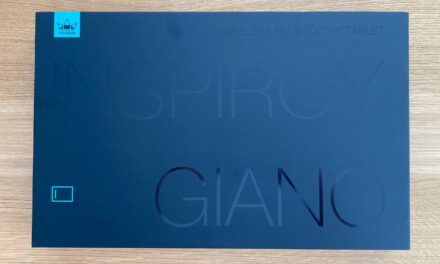
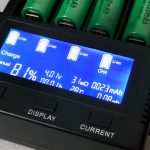

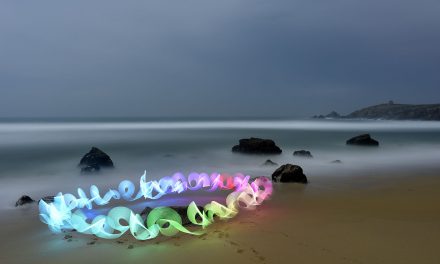
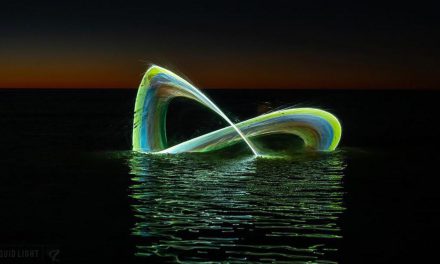


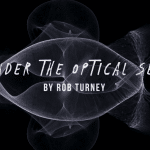
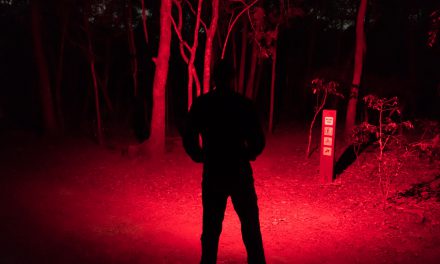

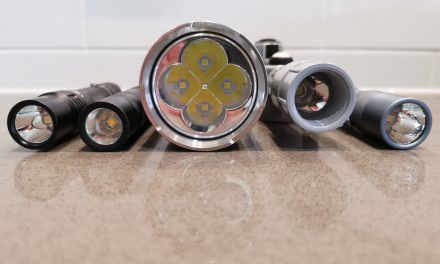
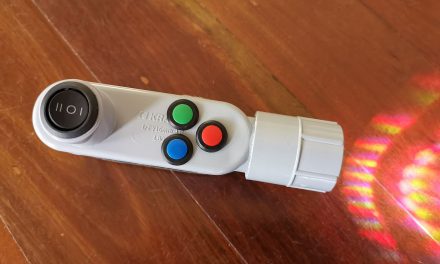
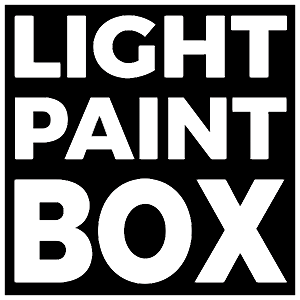
Another cracking review mate. You are the bloody torch guru!
Thanks for the comment!